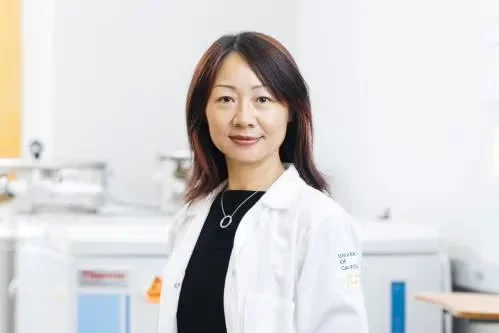Immune-based Treatment gets a Boost to its Cancer-Fighting Superpowers

Imagine a world where your own immune cells are transformed into cancer-fighting superheroes. This is the promise of CAR-T cell therapy, a groundbreaking treatment that’s already saving lives.
In this therapy, patients’ own immune cells are collected, genetically engineered so that they specifically target cancer cells, then returned to the body. The result is a potent new option for battling blood cancers. However, as with any superhero journey, the process of harnessing this incredible power comes with its own set of challenges.
One such hurdle: Current methods for activating T cells don’t resemble closely enough the natural environment in which they interact with another key population of immune cells — a connection crucial for activating T cells and ramping up their ability to fight cancer.
In a recent study, UCLA researchers have unveiled a powerful tool to overcome this limitation. Their new platform combines a flexible material called graphene oxide with antibodies to closely mimic the natural interactions between immune cells. The investigators found that this mimicry shows a high capacity for stimulating T cells to reproduce, while preserving their versatility and potency.
The advance could make CAR-T cell therapy more effective and accessible, while also driving progress for other emerging treatments.
“We’ve developed an exciting new approach to boosting the effectiveness of T cell therapies,” said co author Lili Yang, a professor of microbiology, immunology and molecular genetics at the UCLA College, as well as a member of the Eli and Edythe Broad Center of Regenerative Medicine and Stem Cell Research at UCLA (BSCRC) and of the UCLA Health Jonsson Comprehensive Cancer Center. “Our method enhanced the potency and efficiency of these cells in ways that weren’t possible with traditional methods. This is particularly important for CAR-T cell therapy, where the strength and proliferation of T cells makes a significant difference in patient outcomes.”
Today, the lab-based portion of generating CAR T cells requires the addition of a specific immune factor called autocrine interleukin-2, or IL-2. The researchers found that their platform stimulated the production of IL-2, which may make that addition unnecessary.
The study’s other co-authors are Yan-Ruide Li, Feiyang Ma, Yu-Chen Wang, Yang Liu, Miao Li, Yu Jeong Kim, Yichen Zhu, Zoe Hahn, Yang Zhou, James Brown, Yuchong Zhang, Matteo Pelegrini, and Tzung Hsiai.
Download and read the full article on Nature NanoTechnolgy.



